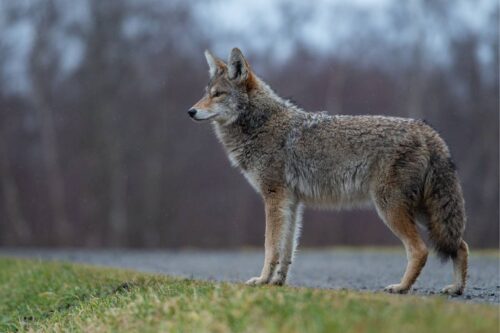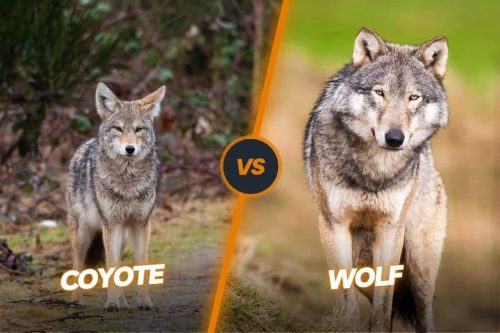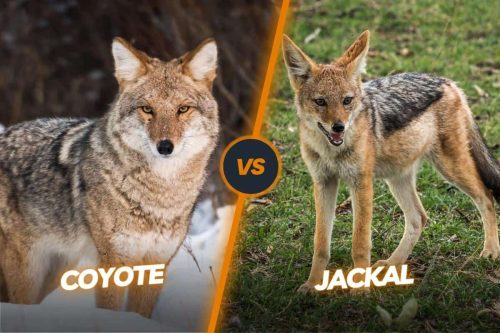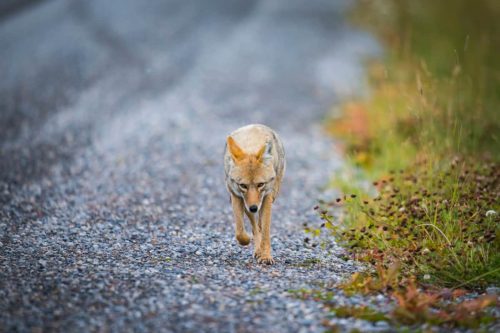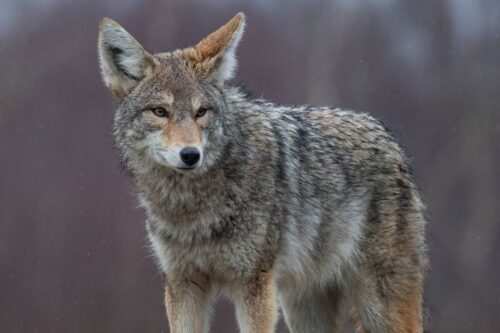Coyotes in Pennsylvania: Exploring Wild Canines In PA State
Coyotes are one of the largest canines we can find in the state of Pennsylvania. These wild dogs are very common in the state and even more famous than wild animals like bobcats, otters, and black bears. Coyotes are now available in all the counties and all kinds of habitats of the state. You can witness them in the mountainous forests, parks, open fields, grasslands, and even in some of the largest cities of the state.
Once these wild animals were believed to be very reclusive canids and only inhabited the remote regions of Pennsylvania. Gradually, they expanded their range and are now available in every nook and corner of the state. It is believed that these animals have mainly migrated from the western USA. In this article, we are going to explain in detail where the coyotes in Pennsylvania came from and what is their social lifestyle and behavior in the state.
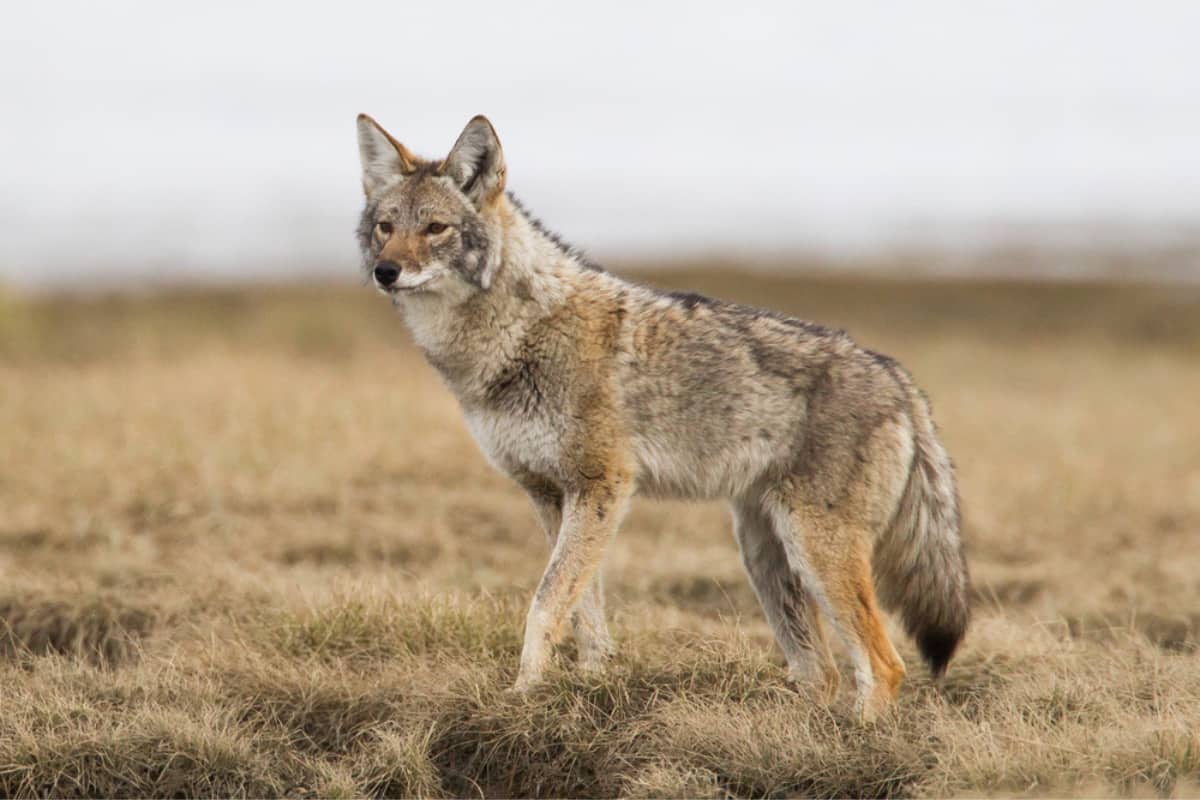
Contents
- The historical presence of the coyotes in Pennsylvania
- How many coyotes live in Pennsylvania?
- Size of the coyote in Pennsylvania
- How to identify an eastern coyote?
- Coyote-human interaction in Pennsylvania
- Did the Pennsylvania Game Commission release coyotes in Pennsylvania?
- Rules and regulations for hunting coyotes in Pennsylvania
- Frequently asked questions
- Conclusion
The historical presence of the coyotes in Pennsylvania
Historically, coyotes in Pennsylvania are relatively recent as compared to many other parts of North America. Coyotes are native to the western part of North America and were historically absent from the eastern United States, including Pennsylvania. However, their range has been expanding eastward since the early 20th century.
In the Early 1900s, Coyotes started to expand their range eastward from their native habitat in the western United States. They likely entered Pennsylvania from neighboring states like Ohio. By the mid-20th century, coyotes had established breeding populations in several parts of Pennsylvania. They were primarily found in rural areas and were not commonly seen in urban or suburban environments at this time.
By the Late 20th Century, Coyotes continued to spread throughout the state, especially during the latter half of the 20th century. Their adaptability allowed them to thrive in a variety of habitats, including forests, farmland, and even suburban neighborhoods. In the 21st Century, Coyotes are now well-established in Pennsylvania, and their range covers the entire state.
They have become a common sight in both rural and urban areas. Reports of coyote encounters, including sightings and interactions with pets, have increased as their population has expanded. According to some Photographic evidence, coyotes actually started establishing themselves in the state in the 1930s. But they actually expanded towards the southern side of the state in the late 1960s.
How many coyotes live in Pennsylvania?
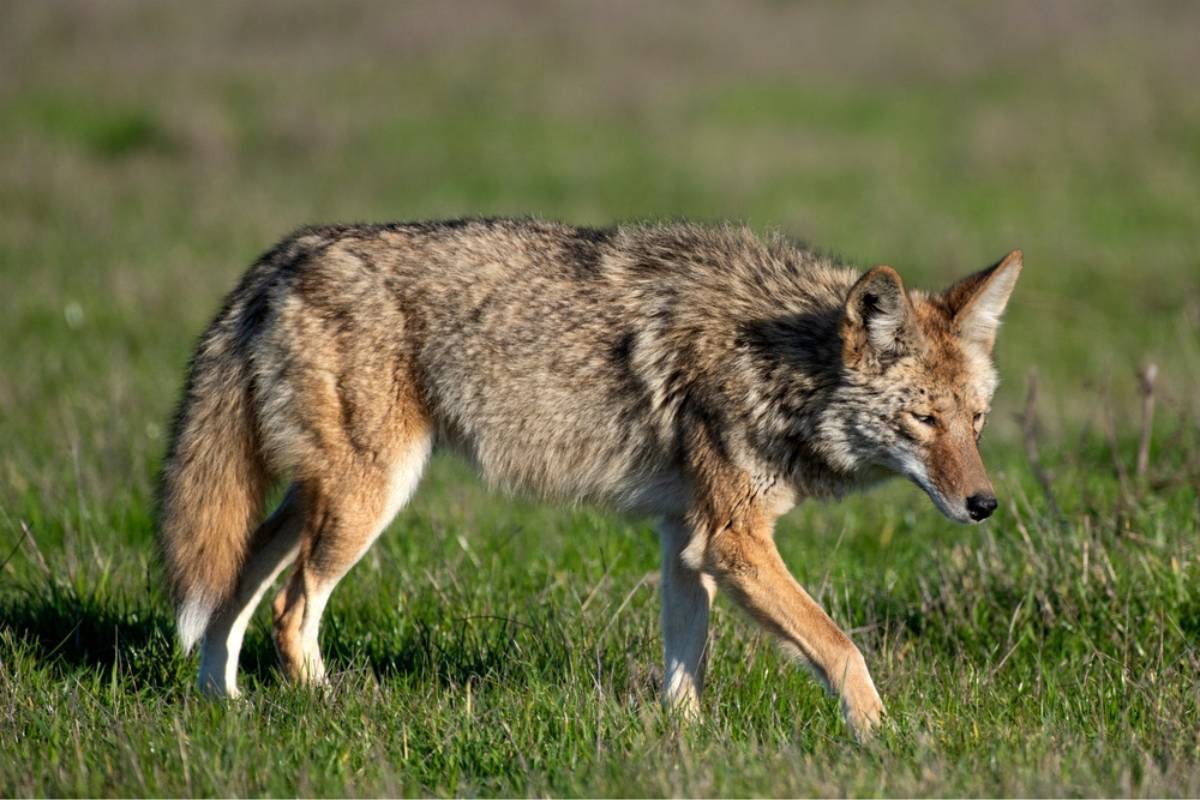
Determining the exact population size of coyotes in Pennsylvania can be challenging because coyotes are highly adaptable and can inhabit a wide range of environments, including urban and suburban areas. Additionally, their populations can fluctuate from year to year based on factors like food availability and environmental conditions.
In 2003, Pennsylvania Game Commission (PGC) had roughly estimated that there were 25,000 to 30,000 coyotes available throughout the state. It was a time when the hunters and trappers had already killed at least 11,000 coyotes of the Pennsylvania state.
Since then, the population of coyotes in the state has been expanding very rapidly and the numbers of coyotes hunted down by hunters and trappers has also become more than doubled and tripled. The commission has recently estimated that hunters and trappers are nowadays killing at least 40,000 coyotes every year in the state.
Size of the coyote in Pennsylvania
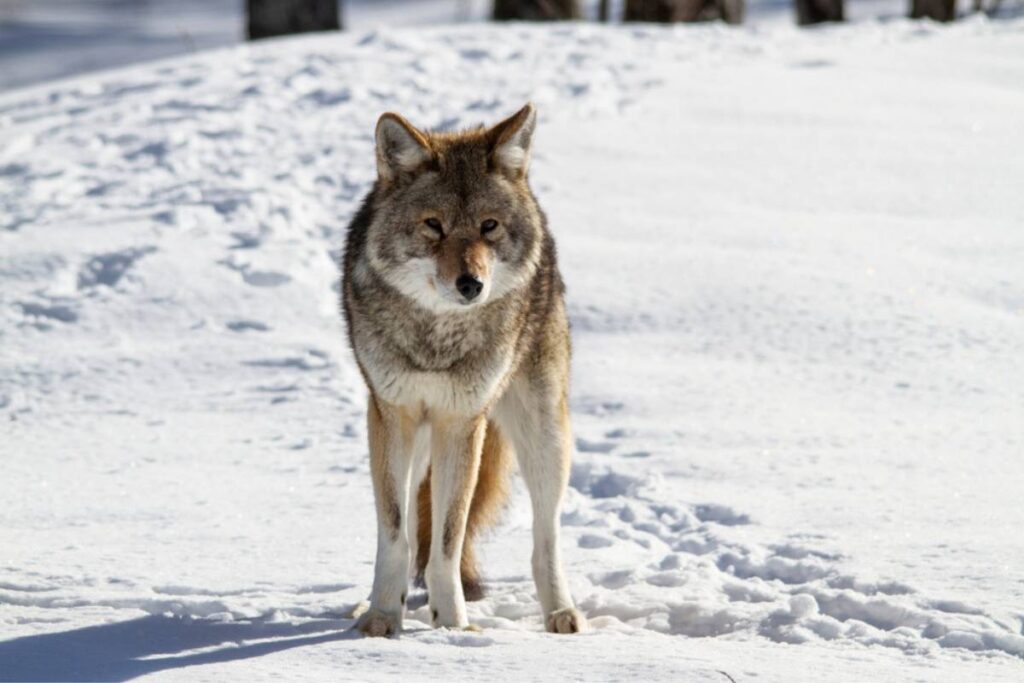
Coyote size can vary from one region to another, and it can also vary among individual coyotes within the same region. In Pennsylvania, as in many other parts of their range, coyotes generally exhibit a size range that includes variations in size.
Generally, coyotes in Pennsylvania are significantly larger in size as compared to the coyotes in the western states of the USA. In the western side, on average an adult coyote weighs around 25 to 35 pounds while in Pennsylvania, on average an adult female coyote weighs around 35 to 40 pounds and an adult male coyote weighs around 45 to 55 pounds.
Coyotes are the apex predators of the state and they can hunt down large animals like deer when they are in the pack and they can also attack your pets and livestock. According to the Pennsylvania Game Commission (PGC) report from 2005 to 2015, coyotes had eaten at least 414 sheep, 913 chickens, and 283 cats. They are also capable of killing your large dogs, goats, and domestic poultry animals.
How to identify an eastern coyote?
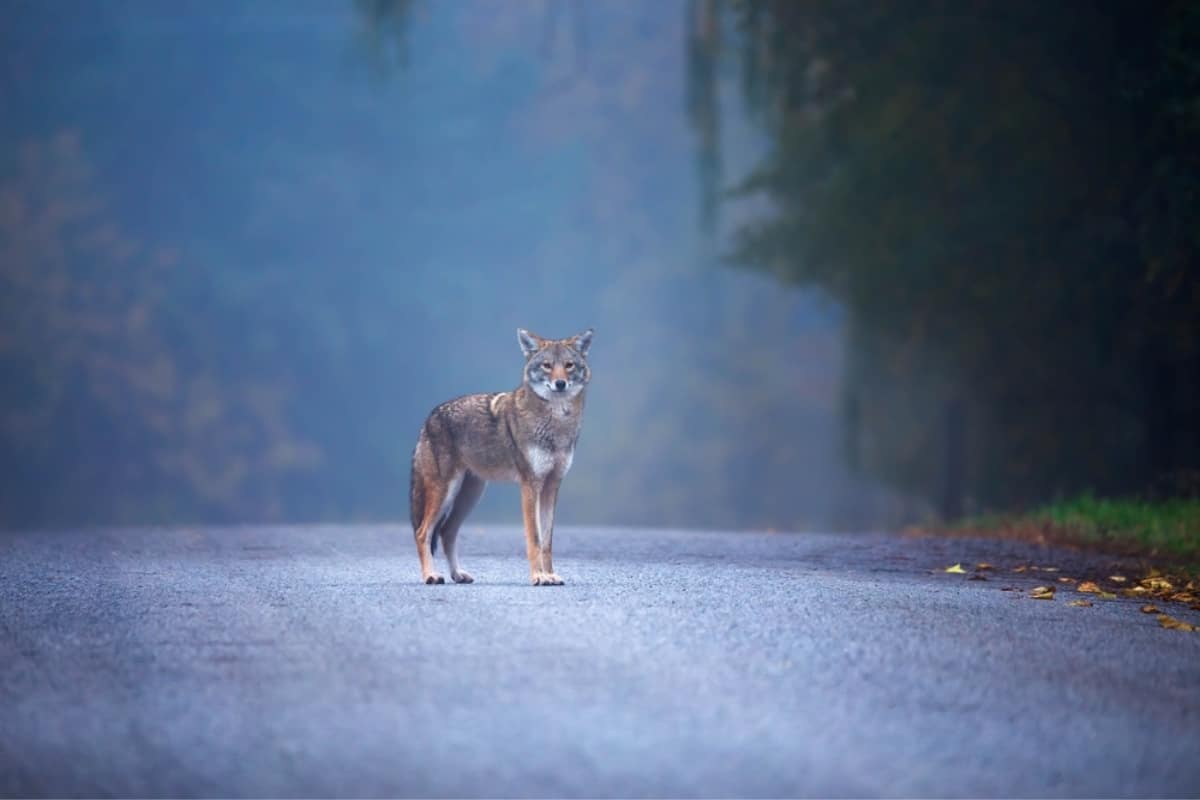
Identifying an eastern coyote can be challenging because they can look similar to other canids like wolves and domestic dogs. However, several key characteristics and features can help you distinguish an eastern coyote. Some of these features are given:
- Eastern coyotes are typically larger than their Western counterparts.
- Eastern coyotes typically have a grayish-brown to reddish-brown coat.
- Eastern Coyotes have relatively long legs and large, pointed ears that stand erect.
- Eastern Coyotes have a long, bushy tail that is typically carried low.
- In the eastern United States, eastern coyotes are more likely to be encountered than wolves, which are rare in this region.
Coyote-human interaction in Pennsylvania
Coyote interactions with human beings in Pennsylvania, as in many other regions, can vary widely depending on several factors, including the environment, the behavior of individual coyotes, and human activities. There have been instances of coyotes interacting with pets, especially smaller dogs and cats. Coyotes can view small pets as potential prey, and conflicts can occur when pets are off-leash or unsupervised.
Coyote attacks on humans in Pennsylvania are extremely rare. Coyotes are generally timid and avoid confrontations with people. However, there have been very isolated incidents of coyotes displaying aggressive behavior towards humans, particularly when they feel cornered or threatened.
Coyote usually tends to change the direction of their route if they think or detect that they can encounter human beings. They also flee from their home if they witness that human beings have entered their territorial range. Sometimes people also feed them but it is not good as you are inviting them into your community or backyard in this way.
To reduce the likelihood of negative interactions with coyotes in Pennsylvania you must follow these steps:
- Keep small pets on a leash or supervise them when outside.
- Secure garbage and compost bins to avoid attracting coyotes with food waste.
- Do not feed coyotes or leave food outdoors.
- If you encounter a coyote, make loud noises, wave your arms, and back away slowly to discourage it from approaching.
- Report aggressive or unusually bold coyote behavior to local wildlife authorities.
Did the Pennsylvania Game Commission release coyotes in Pennsylvania?
No, the Pennsylvania Game Commission (PGC) did not release coyotes into the state of Pennsylvania. Coyotes have naturally expanded their range into Pennsylvania over the years, primarily from neighboring states such as Ohio, and New York. These expansions were not the result of intentional releases by the PGC or any other state agency.
Rules and regulations for hunting coyotes in Pennsylvania
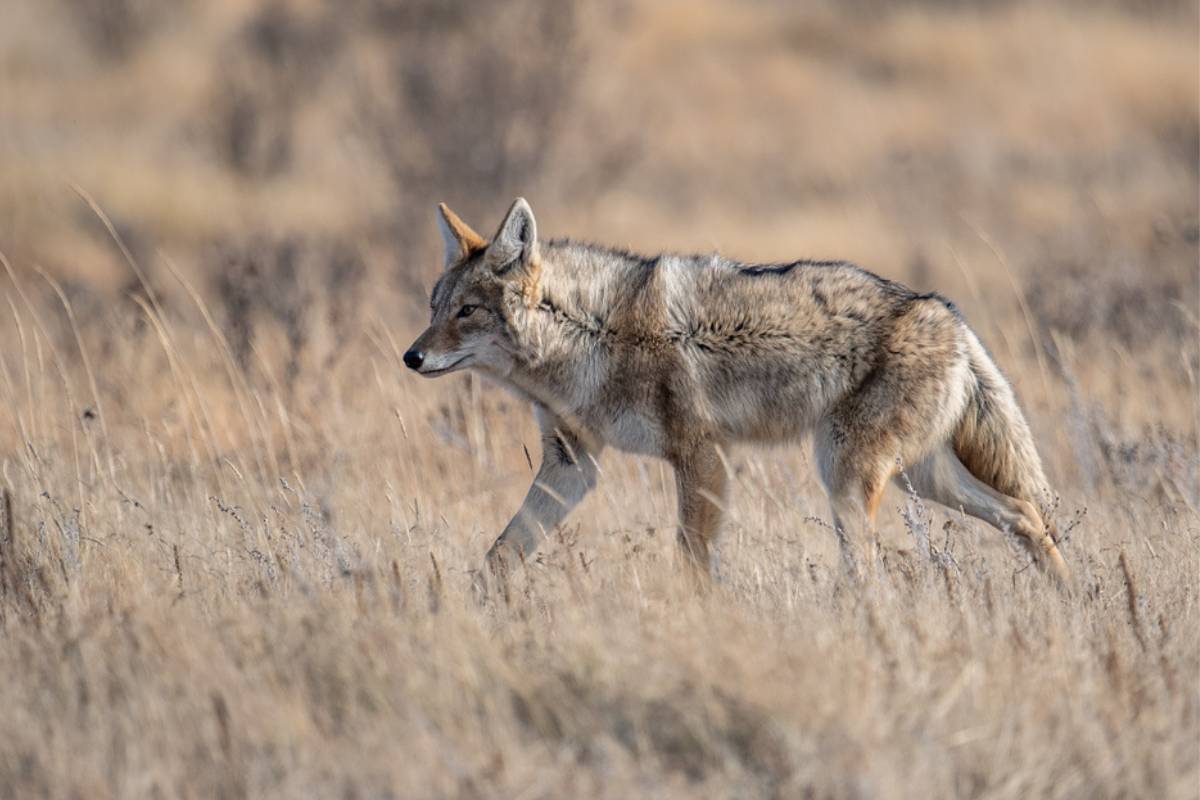
Hunting regulations for coyotes in Pennsylvania can change from year to year, so it’s essential to check the most up-to-date information on the Pennsylvania Game Commission’s website. However, some general guidelines and information regarding the hunting and trapping of coyotes in Pennsylvania are given:
Hunting Seasons
Coyote hunting in Pennsylvania is typically open year-round, meaning there is no specific closed season. However, specific regulations and hunting methods can vary by region and season, so it’s crucial to check the most current regulations for your area.
License Requirements
To hunt coyotes in Pennsylvania, you generally need a valid hunting license. Specific regulations may apply to junior hunters, senior hunters, and non-resident hunters.
Hunting Methods
Coyotes can be hunted using various methods, including firearms, archery equipment, and trapping. Specific rules and regulations may apply to each method. When hunting coyotes with firearms, you must adhere to Pennsylvania’s firearm regulations. This includes following the legal caliber restrictions and the requirement for a hunting license or fur taker license.
Use of Artificial Lights
Some areas may allow the use of artificial lights for hunting coyotes, especially during the night. However, regulations regarding the use of lights can vary.
Coyote Calls
Many hunters use predator calls to attract coyotes. Electronic predator calls are typically allowed, but be sure to check if there are any restrictions on the use of these devices in your area.
Furtaker License
In addition to a general hunting license, you may need a further license to trap coyotes.
Frequently asked questions
Conclusion
The presence of coyotes in Pennsylvania presents a fascinating experience of wildlife adaptation and human coexistence. These versatile creatures, originating from the western United States, have established themselves as resilient species in the diverse landscapes of the Keystone State. Their expanding range has introduced both challenges and opportunities for residents, as well as a chance to better understand the delicate balance of our ecosystems.
I hope this blog will help you a lot in understanding the true nature of these animals and you can also learn how to deal with these animals in case of emergency. You will also learn what measures you can take to keep these animals away from you and how you can protect your property as well as pets and livestock from these wild dogs.

Izzy is an experienced ranch worker who has a passion for exploring nature and getting up close to wildlife. With her connections to various animal organizations, Izzy is well-versed in animal care and rehabilitation.

